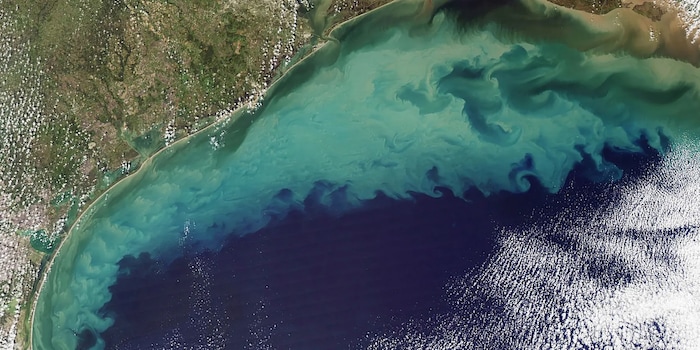
Oceans are becoming greener
The blue planet - that's what we call the Earth by its second name. But the colour of the world's oceans is changing. But that's not necessarily a good sign.
One of the most famous images of our planet is called "Blue Marble" and shows the Earth photographed from Apollo 17. However, our oceans as the basis of the "blue planet" are becoming increasingly discoloured: they are becoming greener, as a team led by B.B. Cael from the National Oceanography Centre in Southampton explains in "Nature Communications". As a result of climate change and the over-fertilisation of the oceans, the composition of the plankton has changed, which has also affected the hue of the oceans.
The working group used data from the MODIS instrument on NASA's Aqua satellite to analyse the changes in radiation intensity emitted by the water surface from 2002 to 2022. These values are an important indicator for analysing colour changes in water. The evaluation showed that the colour of 56 per cent of the water surface changed from blue to green during these two decades.
A comparison with climate models then showed that this development could be closely linked to climate change. According to this, global warming is intensifying the ocean stratification that separates lighter, warm water at the surface from cooler and therefore denser water. When the ocean heats up, the stratification in the upper layers increases. Mixing is weaker and so is the transport of nutrients from the depths to the surface. The composition of the phytoplankton reacts to this and changes.
However, it is still unclear what happens, for example whether smaller algae species displace larger ones and instead occur in higher densities. The consequences for the food chain are also unknown.
A second factor could also play an important role in greening, but Cael and Co. do not discuss this: the mass input of nutrients into the oceans, which repeatedly triggers extensive algal blooms that are also visible from space. They cause intense green colouration of the water over large areas and could also influence the colour of the water in the long term. They are no less harmful to the ecosystem: if the algae ultimately die, they intensively deprive the water of oxygen. This creates dead zones in the sea in which only the hardiest species survive. The Gulf of Mexico, the Baltic Sea, the Black Sea and the Yellow Sea are particularly and regularly affected.
Spectrum of Science
We are a partner of Spektrum der Wissenschaft and want to make well-founded information more accessible to you. Follow Spektrum der Wissenschaft if you like the articles.
[[small:]]
Cover image: © NASA Earth Observatory, Jeff Schmaltz (detail) Large-scale algal blooms are becoming increasingly common in the oceans. Viewed from space, the oceans therefore look greener.
Experts from science and research report on the latest findings in their fields – competent, authentic and comprehensible.